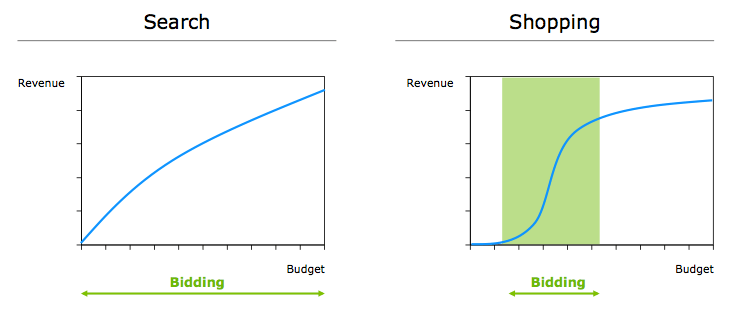Advanced Optimization Of Google Shopping Campaigns
Contributor Andreas Reiffen shares the key findings from crealytics' research and testing on Google Shopping campaigns.
No doubt, Google Shopping delivers great results and has already become an integral part of many advertisers’ lives. However, many of those advertisers haven’t found ways to differentiate themselves from their competition.
A few weeks ago, I presented some Google Shopping insights at SMX London. This blog post gives an overview of our findings from research and testing undertaken by our business intelligence team in Berlin. Hopefully, these insights will enable you to tackle the challenge and do advanced optimization of your Google Shopping campaigns.
How Does Bidding Impact Impression And Traffic Volume?
As most of you know, with paid search, there is a clear relationship between budget and revenue: additional investment will lead to decreasing marginal revenue. We wanted to know whether the same rules apply to Google Shopping. To test this, we took a random selection of products and increased the bids by 200%.
We learned two important things from this test.
-
Although traffic is likely to increase when bids are raised, the traffic quality can decrease if cannibalization happens. The results across our test products varied. For some products we tested, we saw a significant increase in traffic from generic search queries (which would previously have been served by another product within our account), but the traffic for designer/specific search queries remained the same.
In addition, our average cost per click (CPC) increased. This meant that we paid much more for the designer query clicks, and we also gained a lot of generic query clicks (which generally do not convert as well), so our product became less profitable. In other cases, we found that the increase in traffic came from search queries that were much more relevant to the product, meaning the higher bid resulted in an increase in traffic quality, while the profitability remained stable.
- Furthermore, we observed that the impact of bid changes on impression volume also varied. Some examples are given below:
Table 1 – Impact of bid changes on impression volume
These data show that, in the case of Google Shopping, within a very small range there is a much greater level of elasticity as compared to Search. This is illustrated in the graphs below.
Figure 1 – High elasticity in a very small range
There appears to be a minimum bid in order to be eligible for the auction, followed by a point where traffic accelerates quickly for small bid increases, and finally a plateau where bid increases will only have a minor impact on traffic volume.
Our tests soon revealed that we had very little control over how much we were paying for different search queries — unlike Search, where we bid at the keyword level and have full control over which search queries we want to show ads for and which ones we don’t. Google Shopping lacks this level of control.
How Do Google Shopping Campaign Priorities Influence Your Performance?
To test the impact of campaign priorities on performance, we created duplicate campaigns to run intermittently throughout the day with differing priorities. This way, we could isolate the impact of the priority, as all other aspects of the campaign were identical.
Our findings showed that the Campaign Priority itself had no impact on traffic volumes. In fact, when the bid differentials were high, Google would even override the Campaign Priority and serve the product with the higher bid, but lower priority.
How Can We Optimize Google Shopping Performance At The Search Query Level?
The test above showed that you cannot utilize campaign priorities to boost volume. However, we did find that they can be useful for segmenting traffic. Take the following example:

Figure 2 – Same bid for different user intents
The two search queries have very different user intents and are likely to have extremely varied conversion rates. Do we want to place the same bid for a user who has already decided which shoe to buy as for a user who is clearly still in the research phase? The answer, of course, is no.
So how did we overcome this challenge?
We segmented our shopping campaigns by specificity of search query, using campaign priorities and negatives to allocate traffic and to bid higher for the queries that we knew were more likely to convert. This segmentation strategy allowed us to set bids beyond product averages and to allow queries with higher conversion probability to get more exposure. We were also able to save money on low-quality queries. See the results below.
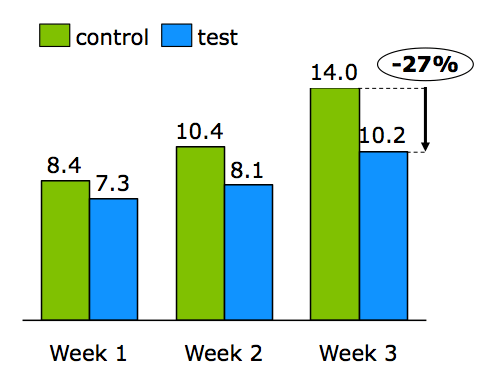
Figure 3 – Cost per order (£) on campaigns split up by specificity
As you can see, the results were impressive. The main challenge with this strategy is that the implementation process is largely manual and takes a great deal of time and resources to execute.
Should You Really Spend Time Optimizing Product Descriptions In The Product Feed?
In order to test this, we changed the product descriptions of a random selection of products and measured the impact on clicks. We first tried to improve the description, and then we made it completely irrelevant. Here’s an example using a dress from TFNC:

Table 2 – Optimizing the description before making it completely irrelevant
All of the products showed roughly the same results:
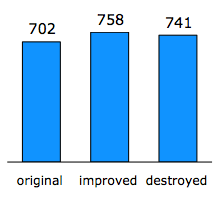
Figure 4 – Changing the description had little impact on clicks
It’s clear from this data that changing the product description has little to no impact at all. Even changing the description of a dress to describe a baseball cap does not seem to have had any negative impact.
How Important Is The Correct Categorization Of Products (Google Product Category) In The Feed?
We tested this similarly to the example above. We started by improving the categorization, then made it irrelevant to the product and measured the impact on clicks. The product tested in this example is a sport shoe:

Table 3 – Making the product category irrelevant
Here are the results:
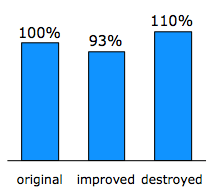
Figure 5 – Making the product category irrelevant had no impact on clicks
Again, we can see that the changes had little impact on clicks. In fact, making the category less relevant had no negative impact at all.
How Does Shopping React When We Rewrite Product Titles?
This is where our findings get really interesting. We looked at a selection of products and analyzed the search queries that were resulting in product sales. We then included the top search queries in the product title field within the product feed. In the example below, we use a Lipsy dress, where the most common search query resulting in a sale was “party dresses.”

Table 4 – Include the top search queries in the product title field within the product feed
The results are:
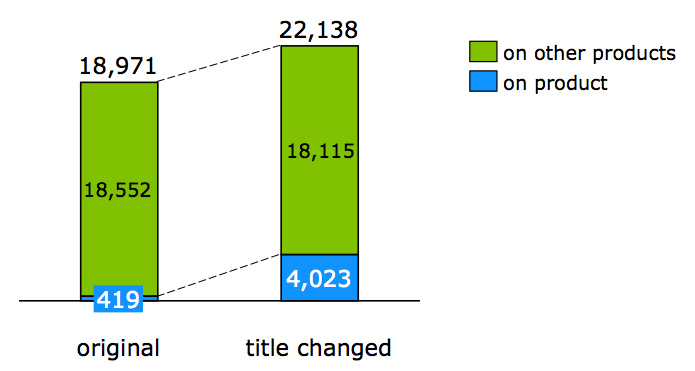
Figure 6 – Traffic from “party dresses” queries increases for this product
Here, we can see that when we included Party Dresses in the product title, there was a huge increase in this product’s traffic. We also compared the clicks on all other products represented by this graph in order to see whether the increase in clicks was incremental, or if the product was cannibalizing clicks that would otherwise have been caught by other products.
We can see here that the tested product increased by about 3,600 clicks, and all products dropped by about 400 clicks, meaning the increase is incremental and not a case of cannibalization.
Conclusion
Our research indicates the following:
- The bidding model behind Shopping has a much greater elasticity compared to Paid Search, but only within a very small range. For some products, small bid increases could result in significant traffic gains on relevant search queries, meaning there are likely to be many “quick wins” within your Shopping account.
- Setting different Campaign Priorities in AdWords for single campaigns will have no impact on traffic volumes. However, using priorities for segmentation of traffic by specificity of search queries is very powerful and can save about 20% of costs.
- Optimizing product descriptions and product categories within the product feed has no impact over traffic volume.
- Optimizing Product Titles within the product feed has a huge impact on traffic volume. Rewriting titles also allows traffic to be directed to certain products.
See my full presentation from SMX London here:
Contributing authors are invited to create content for Search Engine Land and are chosen for their expertise and contribution to the search community. Our contributors work under the oversight of the editorial staff and contributions are checked for quality and relevance to our readers. The opinions they express are their own.
Related stories
New on Search Engine Land


